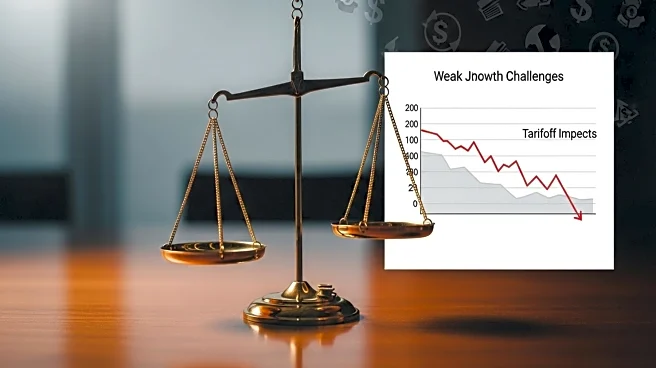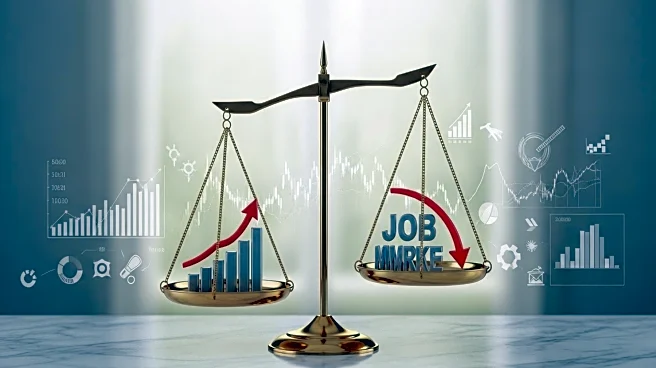What's Happening?
The U.S. economy is experiencing a period of uncertainty as recent employment figures reveal weak job growth. According to the Bureau of Labor Statistics, the country added less than 30,000 jobs on average over the summer months of June, July, and August. This slowdown follows a tumultuous spring marked by tariff disruptions, which have contributed to economic instability. Despite these challenges, some economic analysts remain cautiously optimistic about the future, although the current data presents a grim outlook for immediate economic recovery.
Why It's Important?
The sluggish job growth and economic slowdown have significant implications for various stakeholders, including policymakers, businesses, and workers. The weak employment figures may prompt the Federal Reserve to reconsider its monetary policy, potentially leading to interest rate adjustments to stimulate economic activity. Businesses facing uncertainty may delay investments and hiring, impacting overall economic growth. Workers may experience job insecurity and limited opportunities, affecting consumer confidence and spending. The situation underscores the interconnectedness of global trade policies and domestic economic health, highlighting the need for strategic economic planning.
What's Next?
In response to the economic challenges, the Federal Reserve may consider cutting interest rates to encourage borrowing and investment. Policymakers might also explore fiscal measures to support job creation and economic stability. Businesses will need to navigate the uncertain landscape, potentially adjusting strategies to mitigate risks associated with trade disruptions and economic fluctuations. The coming months will be critical in determining the trajectory of the U.S. economy, with potential policy shifts and market reactions shaping future outcomes.











